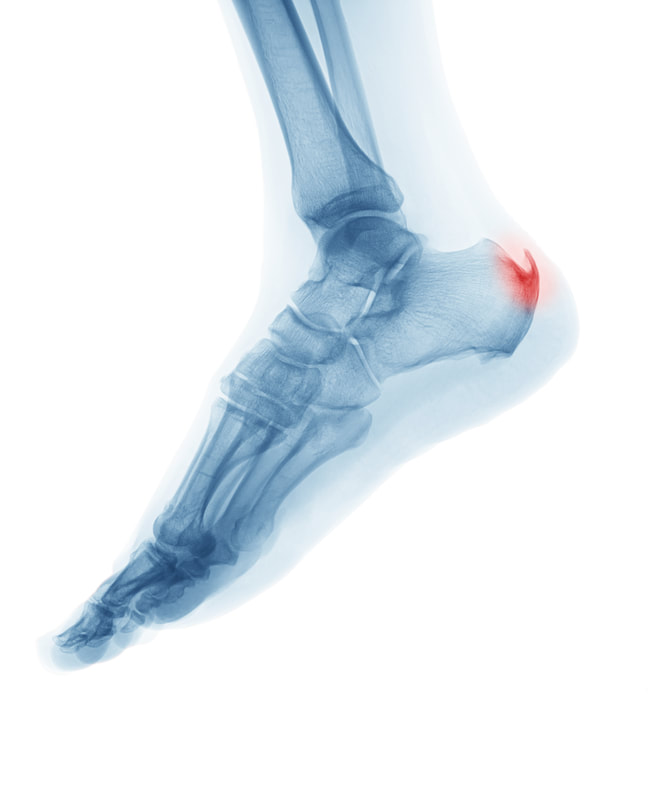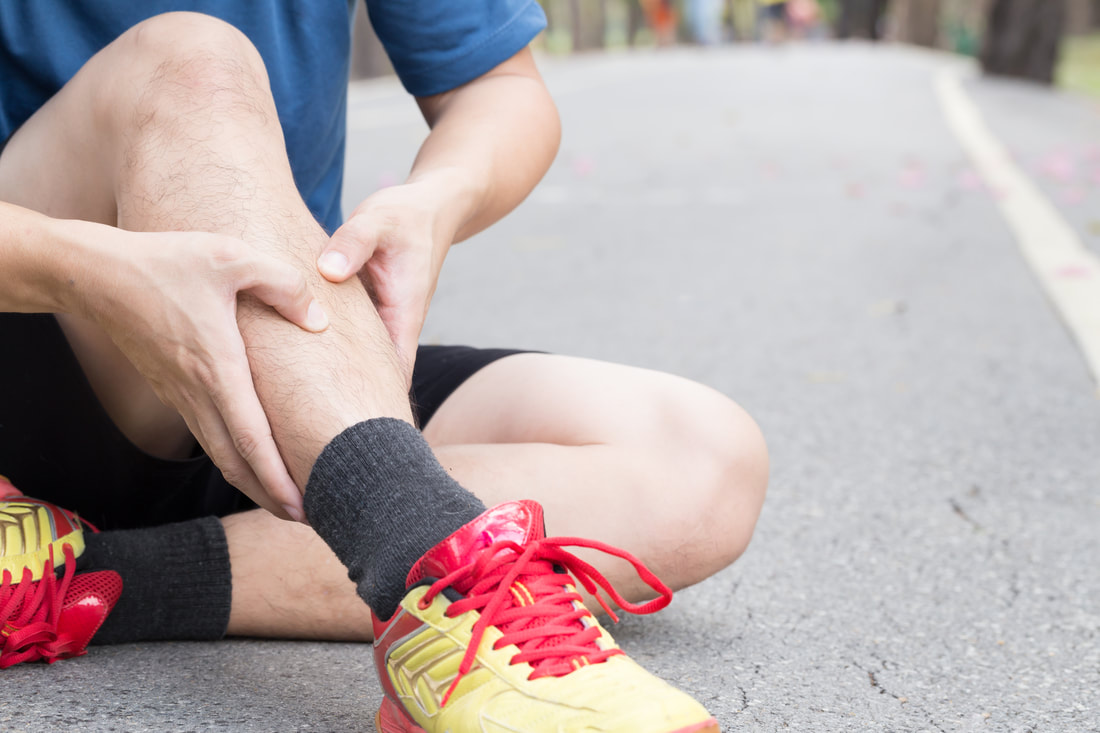| It is never fun watching your child limp off the sporting field or not be able to participate. Severs Disease or Calcaneal Apophysitis is one of most frequent causes of heel pain in active children. The condition occurs most commonly in children between the ages of 8 and 14 years but it can occur in younger children. Both boys and girls are equally vulnerable to this condition. Sports requiring lots of running, jumping, and other high impact activities are particularly associated with Severs. Severs Disease is a non-inflammatory chronic (repetitive injury) to the actively remodelling trabecular metaphyseal bone (fancy word for growth plate!) of the calcaneus (heel bone). Severs is characterised by activity-related pain that occurs on the back of the heel, where the Achilles Tendon attaches on the heel bone. The child may have swelling in the area, and tenderness to the touch, and a reluctance to participate in sport due to pain. There may be tightness of the calf-muscle complex and on examination reduced ankle joint dorsiflexion (upward movement of the ankle joint). Radiographic examination (x-rays) is not usually required, as it generally will not change management. A review of footwear and a biomechanical assessment is necessary to assess your child’s walking, and to assess their joint and muscle strength. Management involves activity modification, gentle stretching of posterior leg muscles and commonly a heel raise inserted into shoes, and orthotics if required. Any biomechanical issues should be addressed along with strengthening of the foot and lower leg. Our podiatrists at Active Podiatry have experience in treating heel pain in children, and are available for consultation. |
|
0 Comments
Shin splints is an umbrella term used to describe a number of different exercise induced lower leg injuries. Medial Tibial Stress Syndrome (MTSS) is one of the most common, therefore will be the focus of today’s blog. There are various scientific theories on why MTSS arises, but despite loads of research there is still not one accepted cause!
MTSS is typically seen in sports that involve running and jumping such as Netball and Football. As I've personally experienced, this niggling injury can be managed but at its most severe can also fully prevent you from partaking in your sport of choice. Injured athletes may present with a dull ache to the inner (medial) lower two-thirds of the shin bone (tibia). You may develop it in one shin or can be unlucky enough to have pain in both! During the early stages of MTSS pain may commence initially with activity and then reduce throughout the duration of your activity. As it worsens, pain may be felt for the duration of the activity and can also linger or worsen following the cessation of your activity. Risk factors that can lead someone to develop MTSS include; 1. Biomechanical factors such as "flat feet". 2. Training Errors (increasing volume, frequency and intensity of running beyond your capabilities). 3. Increased BMI (Body Mass Index) 4. Poor or well worn footwear. 5. Females are also at higher risk of developing MTSS than males. How is MTSS treated? Our team of Podiatrist’s are well equipped to help diagnose and explain your injury. A thorough assessment will help us to identify any contributing factors for the development of your shin pain. Treatment principles generally involve; 1. Load management - We can tailor a program that may still involve some running, but also lower impact activities such bike riding, swimming and cross training gym activities. 2. Addressing biomechanical factors - Our Podiatrists will assess your walking and running gait. Orthotics may be recommended to address any underlying Biomechanical factors that are identified as risk factor for injury. 3. Footwear Recommendations - Your athletic footwear will be assessed to check whether your shoes are suitable for your foot type and your sport of choice. Very minimalist or really worn shoes may increase the load on your shin. 4. Addressing muscle strength deficits in the kinetic change. Stretching, strengthening and plyometric exercises may be prescribed to help increase the ability of your tibia (shin bone) to withstand the forces placed on it during your sport of choice. How soon will I be pain free? Our aim is to get you back to pain free and enjoying your sport again sooner rather than later! You may be still able to continue to run if your shin pain stable, is equal to or less than 3/10 during running you don't experience a flare up of symptoms in the 24 hours following running! Although this may sound like a long time with the right targeted program you should aim to be back running pain free within 4-10 weeks. If you are suffering from this frustrating condition then contact the Team @ Active Podiatry to arrange an appointment. Did you know Podiatrist Shaun White has a special interest in MTSS and has a research article published in the American Journal of Sports Medicine from his university days?! |
Welcome to the Active Podiatry Blog Page.
|




 RSS Feed
RSS Feed